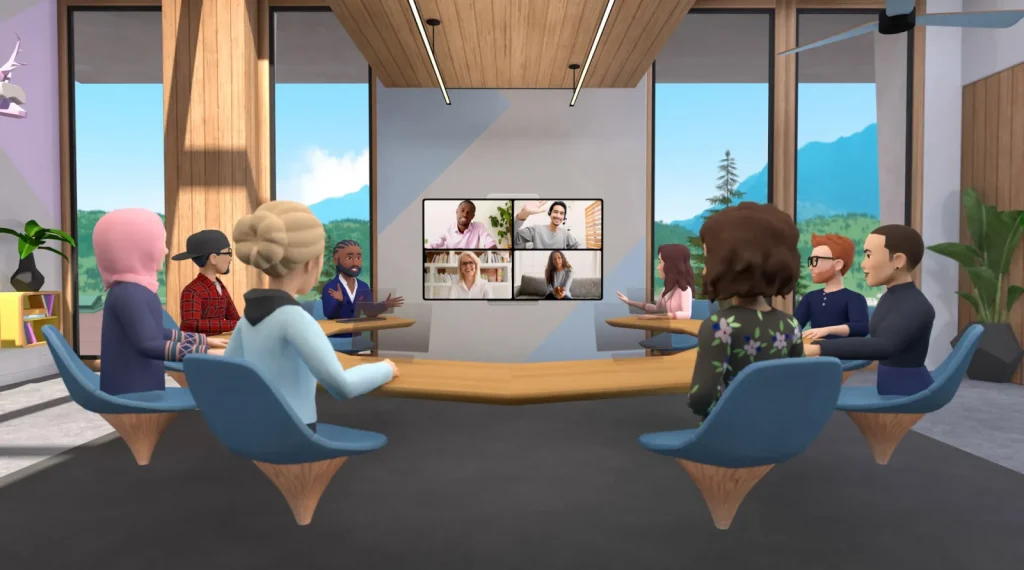In the context of work, the digital divide has become less about access to devices and connectivity and more about skills and mindset. Many experienced professionals have never learned more than the rudimentary basics of email, web search and Microsoft Office. Instead, they lean hard on nearby colleagues or the IT helpdesk when things go wrong. By contrast, young people have already demonstrated a competitive edge in the virtual workplace. They come equipped with a more intuitive grasp of digital technology and the initiative to troubleshoot problems via YouTube tutorials, social media, and subreddits.
As a generation, they are also bigger gamers. As more work takes place in virtual reality (“VR”) – and one does not have to share the somewhat eccentric vision of the metaverse Mark Zuckerberg articulated at the 2021 Connect Conference to believe that it will – being familiar with massively multiplayer online games (“MMOs”) like Fortnite and Roblox, not to mention the ability to manage multiple digital identities, is set to make that edge keener still.
While most of the metaverse is still to be built, VR has long been used in training for certain physical jobs, from astronauts and pilots to law enforcement, surgery and manufacturing. When it comes to specialist machinery or complex locations, the relative safety and cost advantages of training virtually are obvious. But it is in knowledge work – from software engineering to law and design – where the changes will be most profound.
Communication in the Virtual Workplace
For most people, remote working during the pandemic has been characterized by alt-tabbing between communications apps and videoconferencing platforms, such as Slack, Teams and Miro. And there is certainly a lot of room for improvement there, particularly as academic studies have found that collaborative work between colleagues suffers when they work remotely. Exchanges over email or Slack increasingly replace real-time in-person conversations, potentially hampering communication.
Google, itself, has claimed that informal chats at coffee machines and lunch tables in its campus were responsible for innovations, such as Street View and Gmail. With remote working, this kind of serendipitous encounter all but disappears. And, of course, there are costs to remote working in terms of individual wellbeing. Stanford researchers have found that so-called “Zoom fatigue” is driven by a combination of intense eye contact, lack of mobility, self-consciousness about one’s own video feed, and the cognitive demands of needing to give exaggerated feedback to signal understanding, agreement, or concern.
Technological advances mean solutions to the problems related to remote working are becoming possible. Collaboration software, such as Meta’s Horizon Workrooms and Microsoft Mesh, which tout the ability to ensable colleagues to meet as avatars in VR or take part in a real-world meeting as a photo-realistic hologram, are already available.
The metaverse 1.0 will no doubt see organizations creating persistent VR workplace environments, in which employees can interact in real time as embodied avatars. VR versions of office spaces can be designed to encourage chance encounters and corridor chats.
Imagine, for example, if going from one remote meeting to another involved leaving the conference room and crossing a bustling virtual atrium. That might sound far-fetched but bear in mind that Korean PropTech company Zigbang has already opened a 30-floor VR office called Metapolis. Employees choose an avatar and navigate to their desks via elevators and corridors. When they meet a colleague’s avatar, their webcam and mic are activated so they are able to have a conversation. The webcam and mic then turn off automatically as their avatar walks away. Meanwhile, the ability to use and read body language and actively participate in group discussions by scribbling post-it notes or drawing on a virtual whiteboard should make remote meetings in VR more engaging and less sedentary. They require much more active use of the neck, shoulders, arms, and hands than a typical hour on Zoom.
How to Work in the Metaverse
It seems likely that a new set of workplace norms will emerge as the metaverse develops. Team games, including virtual bowling nights and virtual ping-pong tournaments, might supplant Zoom drinks as the default remote working social event. When it comes to hiring, VR could also bring benefits. “Blind” auditions have been shown to significantly increase the representation of female musicians in symphony orchestras. It follows that interviewing as an avatar might diminish the effect of bias – unconscious or otherwise – against people on the basis of their gender, age, or appearance.
Just as custom “skins” are a feature of many MMOs, in the virtual world of work, there may well be demand for creativity in virtual fashion and accessories too, as people seek to express their personal brand within the constraints of professional dress codes for avatars. Gucci has already sold virtual hats, handbags, and sunglasses on the MMO platform Roblox.
Young people have been the worst affected by the disruption COVID has caused to the job market. While some struggled with working productively from shared house or their parents’ homes, others were scammed into joining companies that did not even exist. Nonetheless, the pandemic has also brought exciting glimpses of how remote working might evolve. Due to public health concerns and climate pressure, the latter is here to stay. As it develops into the metaverse, it could continue to bring capabilities that are concentrated among younger people to the fore.
Sam Gilbert is an Affiliated Researcher at the Bennett Institute for Public Policy at University of Cambridge. (This article was initially published by The Conversation.)











